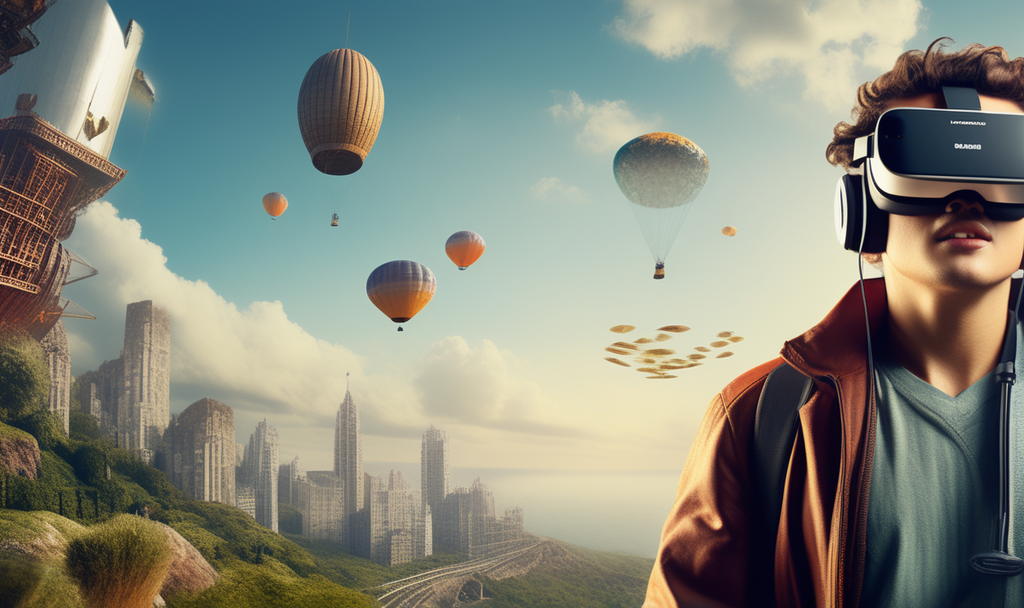The world of storytelling is undergoing a seismic shift. Gone are the days of passively watching a film unfold on a flat screen. Welcome to the era of virtual reality (VR) filmmaking, where audiences are not just viewers, but active participants in the narrative. This innovative medium holds immense potential for creative expression and artistic vision, and is already pushing the boundaries of what we thought possible in storytelling.
What is VR filmmaking?
Imagine stepping into a movie. Instead of observing the action from afar, you are physically present in the story, surrounded by the sights and sounds of the world around you. VR filmmakers use specialized cameras and software to capture 360-degree footage, creating an immersive experience that allows viewers to explore the virtual environment at their own pace and from their own perspective.
This immersive quality is what sets VR filmmaking apart from traditional film. It allows viewers to build a deeper connection with the characters and the story, fostering a heightened sense of empathy and understanding. VR films can transport us to fantastical worlds, put us in the shoes of historical figures, or even confront us with uncomfortable truths about our own world.
Why is VR filmmaking important for creative expression?
Virtual reality filmmaking has rapidly emerged as a transformative medium that pushes the boundaries of conventional storytelling and opens doors to unprecedented artistic possibilities. Let’s delve deeper into why VR filmmaking is crucial for creative expression:
Unbound by Traditional Constraints:
Shattering Framing and Editing Conventions:
Unlike traditional films where the director dictates the scene through framing and editing, VR empowers filmmakers to create open environments where viewers can explore freely. This allows for a sense of agency and discovery, fostering deeper engagement with the narrative.
Embracing Non-Linear Storytelling:
VR breaks free from the linear narrative structure, allowing filmmakers to weave complex narratives with multiple perspectives and storylines. This opens doors to explore time manipulations, branching narratives, and interactive storytelling elements, creating an immersive and multi-layered experience.
Demolishing the Audience Barrier:
VR eliminates the barrier between the audience and the story. Instead of passively watching events unfold on a screen, viewers are placed directly within the virtual world, experiencing the story through their own senses and actions. This fosters a deeper connection with the characters and the environment, making the experience more emotionally impactful and memorable.
A Canvas for Unprecedented Emotional Expression:
Manipulating Perception and Presence:
VR provides filmmakers with unparalleled tools to manipulate the viewer’s perception and presence within the virtual world. This allows for the creation of powerful emotional responses through carefully designed environments, interactions, and sound design.
Evoking a Spectrum of Emotions:
VR can evoke a wide range of emotions, from awe and wonder to fear and physical discomfort. By manipulating the viewer’s senses and placing them directly within the story, VR filmmakers can create visceral experiences. These experiences resonate deeply with the audience.
Deepening Empathy and Understanding:
VR’s immersive nature fosters a profound sense of empathy and understanding for the characters and situations presented. By placing viewers directly in their shoes, VR allows them to experience life through different perspectives, challenging their preconceived notions and fostering deeper connections.
A Catalyst for Artistic Innovation:
Exploring New Narrative Forms:
VR pushes filmmakers to experiment with new and innovative narrative structures. This freedom allows for the creation of unique storytelling experiences that wouldn’t be possible within traditional film formats.
Breaking Down Artistic Boundaries:
VR empowers artists to break down the boundaries between different art forms, creating immersive experiences that combine elements of film, theater, gaming, and even dance. This opens doors to explore new creative territories and push the boundaries of artistic expression.
Democratizing Artistic Creation:
VR filmmaking offers exciting opportunities for democratization, allowing individuals with diverse backgrounds and experiences to create and share their unique stories with the world. This opens doors for new voices and perspectives to be heard, enriching the artistic landscape.
How does VR filmmaking benefit artistic vision?
VR allows filmmakers to push the boundaries of their artistic vision and explore new forms of expression. The immersive nature of the medium opens up new avenues for artistic experimentation. It allows filmmakers to play with form, structure, and storytelling techniques in ways that simply wouldn’t work in traditional film.
VR can also be used to explore complex themes and ideas in a more engaging and impactful way. By placing viewers directly in the heart of the narrative, VR filmmakers can challenge audiences’ preconceived notions and spark meaningful conversations.
The future of VR filmmaking
VR filmmaking is still in its early stages, but it has the potential to revolutionize the way we tell stories and consume entertainment. As technology continues to evolve, VR headsets are becoming more affordable and accessible. This trend suggests that we can expect to see even more innovative and groundbreaking VR films emerge.
This is where VR development company come in. These companies are at the forefront of this technological revolution, developing the tools and software that make VR filmmaking possible. They are constantly pushing the boundaries of what is possible.

